Stroke or Bell’s Palsy? Knowing the Difference Matters
- Carianne Vermeulen

- Sep 18
- 6 min read
Waking up one morning and noticing that your smile looks uneven, or that one eye won’t close properly, can be terrifying. Your first thought might be: “Am I having a stroke?” Then someone mentions Bell’s palsy, leaving you confused, or maybe a little relieved. But how do you know which it really is?

A 2019 study in the Journal of Neurology found that nearly 1 in 3 people who arrive at the hospital with sudden facial weakness are actually having a stroke, not Bell’s palsy. That overlap shows just how similar the symptoms can look, even though the conditions are very different.
Understanding the differences is crucial, not just for peace of mind, but for timely treatment and recovery.
In this post, we will walk through:
The key signs that help distinguish stroke from Bell’s palsy
How doctors make the diagnosis
When to head straight to the emergency room
What is sudden-onset facial palsy?
Sudden facial weakness means that the muscles on one side of your face stop working properly. You may notice:
Drooping of the mouth or eyelid
Inability to smile or close the eye fully
Drooping or sagging of the cheek
Difficulty with speech or eating
The two main causes of sudden facial weakness in adults are stroke and peripheral facial palsy, often referred to as Bell’s palsy. Although they may look similar, the underlying mechanisms are very different.
Understanding stroke
A stroke happens when the blood supply to part of your brain is interrupted, either by a clot (ischemic stroke) or a bleed (hemorrhagic stroke). Because the brain controls the muscles on your face, arms, legs, and speech, a stroke can cause sudden weakness or paralysis on one side of the body, including the face.
Key features of stroke-related facial weakness:
Often associated with weakness in the arm and/or leg on the same side as the face.
May include slurred speech or difficulty understanding language.
Usually affects the lower half of the face on one side more than the upper half. For example, the forehead may still wrinkle.
Can be accompanied by other neurological signs such as dizziness, vision changes, or severe headache.
Red flag: A sudden facial droop with arm or leg weakness is a medical emergency. Immediate action (calling emergency services) is crucial. Early treatment can save brain tissue and improve long-term outcomes.
Understanding sudden-onset peripheral facial palsy
Peripheral facial palsy, often referred to as Bell’s palsy, occurs when the facial nerve outside the brain becomes inflamed or compressed. This nerve controls all the muscles on one side of the face, so when it is affected, the whole side can be weak.
Key features of peripheral facial palsy:
Weakness of the entire half of the face, including the forehead. You may notice an inability to close the eye, raise the eyebrow, or smile on that side.
Usually develops suddenly, often overnight.
May be preceded by ear pain or tingling around the jaw.
Often associated with changes in taste or increased sensitivity to sound.
Does not typically cause weakness in the arms or legs.
The cause is often viral, although sometimes the exact reason is unknown. Most cases are temporary, with many people starting to recover within weeks to months, especially with early treatment.
What are the key differences between Bell’s palsy and a stroke?
Careful observation can sometimes give clues, but only a professional assessment can confirm what is really happening. Still, knowing the typical patterns can help you decide when to seek urgent help.
Both stroke and Bell’s palsy can cause sudden weakness on one side of the face, but for very different reasons:
Bell’s palsy affects the facial nerve. It weakens the whole side of the face; forehead, cheek, and mouth.
Stroke happens in the brain when blood flow is blocked or a vessel bursts. If the area that controls the face is damaged, movement is usually lost just in the lower face.
A simple rule of thumb:- If the entire side of the face, including the forehead, is weak, Bell’s palsy is more likely.- If the forehead still moves but the mouth droops, think stroke.
A phrase we often use with patients is:“Stroke spares the forehead. Bell’s palsy spares nothing.”
Key Differences at a Glance
Feature | Stroke | Bell’s Palsy |
Onset | Sudden, often during activity | Sudden, often noticed overnight |
Forehead movement | Usually preserved | Affected (unable to wrinkle forehead) |
Other symptoms | Arm or leg weakness, speech difficulty | Ear pain, taste changes, sound sensitivity |
Sensory changes | Possible numbness, vision changes | Usually limited to the face |
Urgency | Emergency – call an ambulance immediately | Urgent, but not usually life-threatening |
Recognizing Stroke: Think BEFAST
The signs of stroke usually come on quickly. They may be mild at first but can worsen fast. Even if you are unsure, it is safest to get emergency care right away.
Balance: Sudden loss of balance or coordination
Eyes: Sudden vision changes
Face: Is one side drooping?
Arm: Can both arms be lifted?
Speech: Is speech slurred or hard to understand?
Time: Call emergency services immediately
Bottom line: If you or someone you know develops sudden facial weakness, treat it as a medical emergency until stroke is ruled out. Acting fast can protect brain function and save a life.
How do clinicians tell if it’s Bell’s palsy or stroke?
When you show up with sudden facial weakness, clinicians start by carefully assessing your symptoms. They will ask how the weakness began and examine how your face moves. You may be asked to:
Raise your eyebrows
Smile
Close your eyes tightly
Depending on what they find, clinicians may also order additional tests:
CT scan or MRI to check the brain
Blood tests to look for infection, inflammation, or clotting problems
Other tests, if there are signs of additional nerve or brain issues
Bell’s palsy is known as a “diagnosis of exclusion.” That means doctors first rule out more serious causes, like stroke, brain tumors, or infections. Once those are ruled out, and your symptoms match the typical pattern, a diagnosis of Bell’s palsy can be made.
If you want to dive deeper, check out our article: Bell’s Palsy vs Facial Palsy: What’s the Real Difference?
What symptoms should prompt emergency care?
If any of the following happens, go to the emergency room immediately:
Sudden weakness in the face, especially if the forehead still moves
Trouble speaking or understanding others
Weakness or numbness in the arm or leg
Vision problems or double vision
Dizziness, confusion, or fainting
A sudden headache that is intense or unusual
It is better to go to the hospital and find out it is not a stroke than to stay home and lose time. Stroke treatment is most effective within the first few hours. Every minute counts.
If it turns out to be Bell’s palsy, you will still need treatment, but it is not life-threatening. Stroke is different. It must be treated right away.
Why is it important to rule out a stroke first?
Because stroke can cause permanent brain damage or death if not treated in time. Delaying care could mean more damage to the brain and a harder recovery.
That is why clinicians always rule out stroke before diagnosing Bell’s palsy. Bell’s palsy may seem less scary once you know what it is, but that decision must be made by someone trained to spot the difference.
If Bell’s palsy is confirmed, treatment usually includes:
Steroid medication, to reduce nerve swelling
Eye care, if the eye cannot close properly
Antiviral treatment, if a virus is suspected
Specialist facial therapy
Most people with Bell’s palsy recover within a few months. You can read more about that in Facial Palsy Recovery Stages: What to Expect at Each Phase.
But a stroke needs fast action. That is why stroke must always be ruled out first.
Immediate Actions: What to Do
If you suspect a stroke:
Call emergency services immediately (e.g. 10177 in South Africa)
Note the time the symptoms started; this is critical for treatment
Do not wait to see if it improves on its own
If you suspect Bell’s palsy:
See a doctor promptly, ideally within 72 hours. Early treatment with medication can improve recovery
Protect the eye on the affected side
Contact a facial therapist for specialist support, education and rehabilitation
Recovery Outlook
Stroke: Recovery varies widely, depending on the severity and location of the brain injury. Some people regain most of their facial function, while others may experience long-term weakness or asymmetry. Early rehabilitation improves outcomes.
Bell’s Palsy: Most people begin to improve within 2–3 weeks. About 70–80% recover fully within three months, especially with early medication and specialist therapeutic support. Some people may experience lingering weakness or mild asymmetry, which can often be improved with targeted facial therapy.
Summary
Sudden facial weakness can be alarming, and it is often hard to tell whether it is a stroke or Bell’s palsy. While both cause one-sided facial paralysis, their causes, symptoms, and urgency differ. Stroke usually affects the lower face and may come with arm or leg weakness, slurred speech, or vision changes, making it a medical emergency.
Bell’s palsy affects the entire side of the face, including the forehead, and is typically temporary, often improving with early treatment and specialist therapy. Recognizing the red flags, understanding the differences, and seeking prompt medical care can save lives and improve recovery outcomes.
To learn more about how facial palsy develops and heals, read What Is Facial Palsy? Causes, Symptoms and Treatment or visit Can Facial Palsy Be Cured? Here’s What You Should Know.


Comments